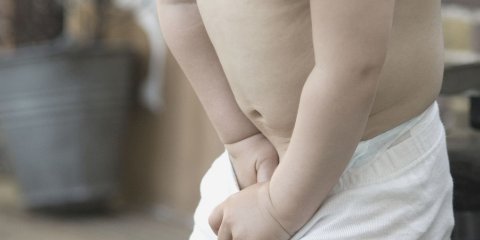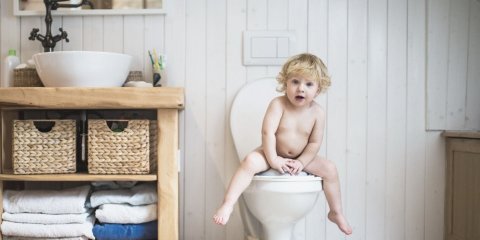Key Points
- Toddlers should pee around every two hours
- Toddlers generally urinate between four and eight times per day
- The bladder of a toddler holds 90-150ml of fluid
Are you wondering how often a toddler should pee? You might want to know the answer to this for two reasons:
- If you have started toilet training a toddler and want to know how often you should remind them to pee, or
- To ensure they are getting enough fluid intake
How often should a Toddler Pee? Around every two hours is a good benchmark for how often a toddler should pee, although generally they urinate between four and eight times per day .
But, that isn’t everything you need to know when it comes to how often a toddler should pee.
Bladder size of toddlers vs. infants
You’ve grown used to the habits of your little baby, including how often to change their nappy. But, now they are a toddler, things are changing.
Because the size of the bladder grows just as the rest of the body does, it makes sense that a toddler bladder can hold more urine than an infant bladder. In fact, an infant bladder is full after just one hour and can hold only 30-60ml of liquid. Whereas a toddler bladder is full after two hours and can hold 90-150ml of fluid.
This means that a toddler should pee at least as often as every two hours .
We say “at least” as often, because the bladder usually signals the need to urinate back at the quarter-full mark.
The bladder is an expandable organ that communicates directly with the brain via a series of receptors to let the brain know just how full it is - and how urgent the need to pee is. It’s a bit like the bladder has an “ invisible fill line ”.
When do toddlers gain control over their sphincter and pelvic floor muscles?
Are you thinking about toilet training your toddler soon? During toilet training, you’ll be reminding your toddler to visit the toilet or potty frequently.

In fact, it’s helpful to remind them to go to the toilet every 1-2 hours. And you will need to prompt them because their brain and some important muscles are still developing, so they need a lot of help during this stage of learning - it’s a combination of physiological, psychological readiness, as well as intellectual preparation that will get them there.
It’s not until 2-3 years of age that most children develop control over their pelvic floor and sphincter muscles . If they don’t have this control, they will be unable to hold their pee until they get to the toilet or potty.
What are the signs of a bladder control problem?
It can be difficult to determine if a toddler has a bladder control problem because they are usually in the process of toilet training. Most children are daytime trained by age four , but not dry at night until age 5 or 6.
Therefore, it’s important not to jump to conclusions that your toddler has a bladder control problem.
However, if you are seeing some of the following signs and are concerned, please consult your doctor for further advice.
Signs of a bladder control problem can include:
- Accidental loss of urine
- Infrequent urination (only 2-3 times per day for example)
- Needing to urinate urgently (usually accompanied by accidental loss of urine)
- A dribbling or weak urine stream
- Behaviours that indicate they are trying to stop urine leakage, eg. squatting, squirming, leg crossing, heel sitting
- Have started wetting again, even though they have been toilet trained
Is it dangerous for my toddler to hold in their pee?
Generally speaking, your toddler would have to hold in their pee for a long time in order to cause serious complications. For example, holding it in for over 10 hours may cause urinary retention , so that even when they want to pee, the bladder muscles can’t relax enough to do so. Alternatively, holding urination as a habit can cause atrophy, and eventually incontinence.

What is more likely is that your toddler might develop a urinary tract infection (UTI) if they don’t fully empty their bladder for a couple of days at time, or don’t empty it as often as they should.
- Frequent urination
- Leaking urine before making it to the toilet/potty
- Burning or pain when peeing
- Smelly or even discoloured urine
- Pain in the lower abdomen
- Fever
- Vomiting
However, toddlers may not actually show or be able to describe these symptoms to you and instead appear generally unwell .
If your toddler has had repeated urinary tract infections, it’s recommended they pee every 1.5 - 2 hours to help prevent further UTIs from occurring.
How much water should your toddler drink each day?
Are you worried your toddler doesn’t drink enough water? Do you live in a very hot climate? These are valid reasons for wanting to keep an eye on your child’s fluid intake.
Toddlers should drink around 1 cups per year of age which works out to be 2 - 4 cups for most toddlers . As it’s recommended that toddler’s don’t exceed drinking 2 cups of milk each day, around half of their fluid intake should be water. Although it can be tempting to give in to toddlers’ demands for soft drink or fruit juice, water is, by far, the best drink for all children .
When looking at how much fluid your toddler is taking in, you should also consider factors like climate and level of physical activity which may increase the need for water .
If your toddler has not been drinking enough fluid, it’s important to watch for signs of dehydration.
Signs of dehydration to watch for in your toddler
Symptoms of dehydration can include:
- Urinating infrequently
- Dark yellow or brown-coloured urine
- Dry mouth
- Dizziness
- Sunken eyes
- Constipation
Final thoughts on how often a toddler should pee
Although each person, and indeed, each toddler is slightly different, you can expect your toddler to pee around every two hours.
If you’re concerned about bladder problems, or dehydration, please seek medical advice.

